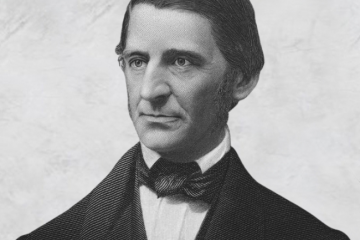
Click below to listen to this article
Self-actualization
Self-actualization is a concept that has been widely used in psychology to describe the process of fulfilling one’s potential and achieving personal growth. It is often associated with the humanistic perspective of psychology, which emphasizes the inherent worth and dignity of every person. However, Self-actualization is not only a humanistic idea, but also a transpersonal one. Transpersonal psychology is a branch of psychology that explores the spiritual and transcendent aspects of human experience, such as peak experiences, mystical states, and altered states of consciousness. In this article, we will examine how Self-actualization and transcendence are related, and how they can contribute to psychological wellbeing and development.
What is Self-actualization?
Self-actualization is a psychological concept that refers to the process of fulfilling one’s potential and becoming the best version of oneself. It is often associated with the humanistic psychologist Abraham Maslow, who proposed a hierarchy of needs that humans strive to satisfy, from basic physiological and safety needs to higher psychological and spiritual needs. According to Maslow, Self-actualization is the second-highest level of human development, where one transcends the lower needs and expresses one’s true self in a creative and authentic way.
Self-actualization is not a fixed state, but a dynamic and ongoing process that requires constant growth and learning. It involves discovering one’s talents, interests, values, and purpose, and pursuing them with passion and courage. It also involves developing a positive self-image, a realistic self-assessment, and a healthy self-esteem. Self-actualized people are not perfect, but they can accept themselves and others as they are, without judgment or criticism. They can also cope with challenges, overcome obstacles, and adapt to changing circumstances.
Self-actualization is not a common or easy achievement, but it is possible for anyone who is willing to work on themselves and explore their inner potential. It is not a selfish or narcissistic goal, but a noble and altruistic one that benefits not only oneself, but also others and society as a whole. Self-actualized people are often described as happy, fulfilled, creative, compassionate, independent, and wise. They are also more likely to contribute positively to the world through their work, hobbies, relationships, and social causes.
History of Self-actualization
The concept of Self-actualization was first introduced by Kurt Goldstein, a humanistic psychologist, who defined it as the tendency of an organism to realize its full potential. Later, Abraham Maslow popularized the term and placed it at the top of his hierarchy of needs, which describes the stages of human motivation and growth. According to Maslow, Self-actualization is the ultimate goal of human existence, where one achieves a state of harmony, creativity, and fulfilment.
However, Maslow also recognized that Self-actualization is not the end of the journey, but rather a starting point for further development. He proposed a higher level of motivation called self-transcendence, which involves going beyond oneself and connecting with something greater, such as nature, spirituality, or humanity. self-transcendence is not a separate need from Self-actualization, but rather an extension and expansion of it. Maslow believed that self-transcendence can lead to peak experiences, which are moments of ecstasy, joy, and wonder that transcend ordinary consciousness.
Self-actualization and self-transcendence are related concepts that describe different aspects of human potential and motivation. Self-actualization is the process of becoming fully oneself, while self-transcendence is the process of going beyond oneself and relating to something larger. Both are important for achieving a meaningful and satisfying life.
The built-in drive to actualize
One of the key concepts in the person-centred approach of Carl Rogers is the actualizing tendency, which refers to the innate and ongoing motivation of all living organisms to grow, develop, and enhance their potential (Rogers, 1951, 1980). According to Rogers, the actualizing tendency is the source of creativity, self-expression, and psychological wellbeing. He also believed that this tendency can be distorted or blocked by external factors, such as social pressure, conditional acceptance, or lack of empathy. Therefore, he proposed that the role of therapy is to provide a supportive and accepting environment that allows clients to reconnect with their true selves and pursue their own goals (Rogers, 1957).
Maslow, however, did not view Self-actualization as an inherent and universal tendency, but rather as a rare and exceptional achievement that only a few people can attain. Maslow also suggested that Self-actualization depends on a certain extent, on the satisfaction of lower-level needs, such as physiological, safety, belongingness, and esteem needs. It may seem, therefore, that Maslow’s theory implies that Self-actualization is more conditional and hierarchical than Rogers’s actualizing tendency. However, Rogers also stated that the individuals’ ability to self-actualise was dependent on the individuals’ environment, etc. If we read between the lines of these two views, perhaps what is being inferred, is that society is too toxic for most people to achieve actualization.
Another theory that shares some similarities with Rogers’s actualizing tendency is self-determination theory (SDT), which posits that human beings have three basic psychological needs: autonomy, competence, and relatedness (Deci & Ryan, 1985). SDT argues that these needs are essential for optimal functioning and wellbeing, and that they can be either supported or thwarted by the social environment. SDT also emphasizes the importance of intrinsic motivation, which is driven by interest and enjoyment rather than external rewards or pressures. However, SDT differs from Rogers’s actualizing tendency in that it does not assume that all human behaviour is oriented toward growth and development. Rather, SDT acknowledges that some behaviours may be motivated by extrinsic factors or by internalized values that are not congruent with one’s true self.
In conclusion, Rogers’s actualizing tendency is a unique and influential concept that has inspired many other theories and practices in psychology and beyond. It reflects Rogers’s optimistic and humanistic view of human nature and his belief in the power of empathy and unconditional positive regard. As he stated: “The curious paradox is that when I accept myself just as I am, then I can change” (Rogers, 1961, p. 17).
Techniques of Self-actualization
Self-actualization and self-transcendence are two concepts that are related to human development and motivation. Self-actualization refers to fulfilling your own potential and becoming the best version of yourself. self-transcendence refers to transcending the self and relating to something greater than yourself, such as nature, humanity, God, or the universe.
Some of the techniques of Self-actualization are:
- Pursuing your passions and interests
- Developing your talents and skills
- Seeking new challenges and experiences
- Expressing your creativity and uniqueness
- Accepting yourself and others
- Being authentic and honest
- Taking responsibility for your actions and choices
- Living in the present moment
- Having a sense of purpose and direction
Some of the techniques of self-transcendence are:
- Practising meditation, prayer, or mindfulness
- Engaging in altruistic or humanitarian activities
- Experiencing awe or wonder at nature or art
- Cultivating compassion and empathy for others
- Seeking spiritual or philosophical insights
- Having peak experiences or mystical states of consciousness
These two concepts complement each other because they both contribute to personal growth and well-being. Self-actualization helps you discover and realize your true self, while self-transcendence helps you connect and contribute to something beyond yourself. Self-actualization gives you a sense of fulfilment and achievement, while self-transcendence gives you a sense of meaning and transcendence. While Self-actualization enhances your individuality and autonomy, self-transcendence enhances your universality and interdependence.
Example use cases
Self-actualized people are those who have realized their full potential and achieved great success and human potential. They are often seen as examples of human excellence and inspiration for others. Some of the historical figures that have been considered self-actualized by psychologist Abraham Maslow are Albert Einstein, Abraham Lincoln, Eleanor Roosevelt, Henry David Thoreau, Camille Pissarro, Ida Tarbell, Spinoza, and Harriet Tubman.
Some of the use cases of self-actualized people are:
- They have “peak experiences” that involve feelings of intense ecstasy, joy, and wonder. During such experiences, they lose track of time and feel that what they are experiencing is important, valuable, unique, and special. They also feel transformed and gain insight into the world and themselves.
- They have a “continuous sense of appreciation” for the good things in life, no matter how often they experience them. Also, they maintain a sense of awe, wonder, and gratitude for everyday experiences that others may take for granted.
- They have “acceptance” of themselves and others as they are. In addition, they do not feel guilty or ashamed of their flaws and limitations, nor do they judge or criticize others for theirs. Also, they are able to enjoy themselves and their lives without inhibition.
- They are “spontaneous”, “independent”, and “true to themselves”. They do not conform to social norms or expectations, but act according to their own values and beliefs. In addition, they do not need the approval or validation of others, but form their own opinions and perspectives. Also, they value solitude and can be comfortable being alone.
- They have a “sense for reality and truth”. They are able to perceive reality more accurately and objectively than others, and do not fall prey to illusions or delusions. Also, they can detect the spurious, the fake, and the dishonest in people and situations.
- They are “creative” in all aspects of their lives. They do not limit their creativity to specific domains or fields, but express it in various ways. Also, they are original, innovative, and resourceful in solving problems and overcoming challenges.
Further reading
If you are interested in learning more about Self-actualization and how to achieve it, here are some weblinks that you can explore:
https://www.verywellmind.com/characteristics-of-self-actualized-people-2795963
This article describes the characteristics of self-actualized people according to Maslow and provides some examples of famous people who exemplify them.
https://www.psychologytoday.com/us/blog/what-matters-most/201708/Self-actualization-the-key-living-well
This article explains the concept of Self-actualization and how it relates to living well. It also offers some tips on how to pursue Self-actualization in your daily life.
https://positivepsychology.com/Self-actualization/
This article provides a comprehensive overview of Self-actualization, including its history, definition, benefits, and challenges. It also includes some exercises and tools that can help you assess and enhance your level of Self-actualization.
https://www.mindtools.com/pages/article/Self-actualization.htm
This article introduces the concept of Self-actualization and how it can help you achieve personal and professional success. It also suggests some strategies and skills that can help you become more self-actualized.
References
Deci, E. L., & Ryan, R. M. (1985). Intrinsic motivation and self-determination in human behavior. Springer Science & Business Media.
Maslow, A. H. (1943). A theory of human motivation. Psychological Review, 50(4), 370–396.
Rogers, C. R. (1951). Client-centered therapy: Its current practice, implications and theory. Houghton Mifflin.
Rogers, C. R. (1957). The necessary and sufficient conditions of therapeutic personality change. Journal of Consulting Psychology, 21(2), 95–103.
Rogers, C. R. (1961). On becoming a person: A therapist’s view of psychotherapy. Houghton Mifflin.
Rogers, C. R. (1980). A way of being. Houghton Mifflin.




0 Comments